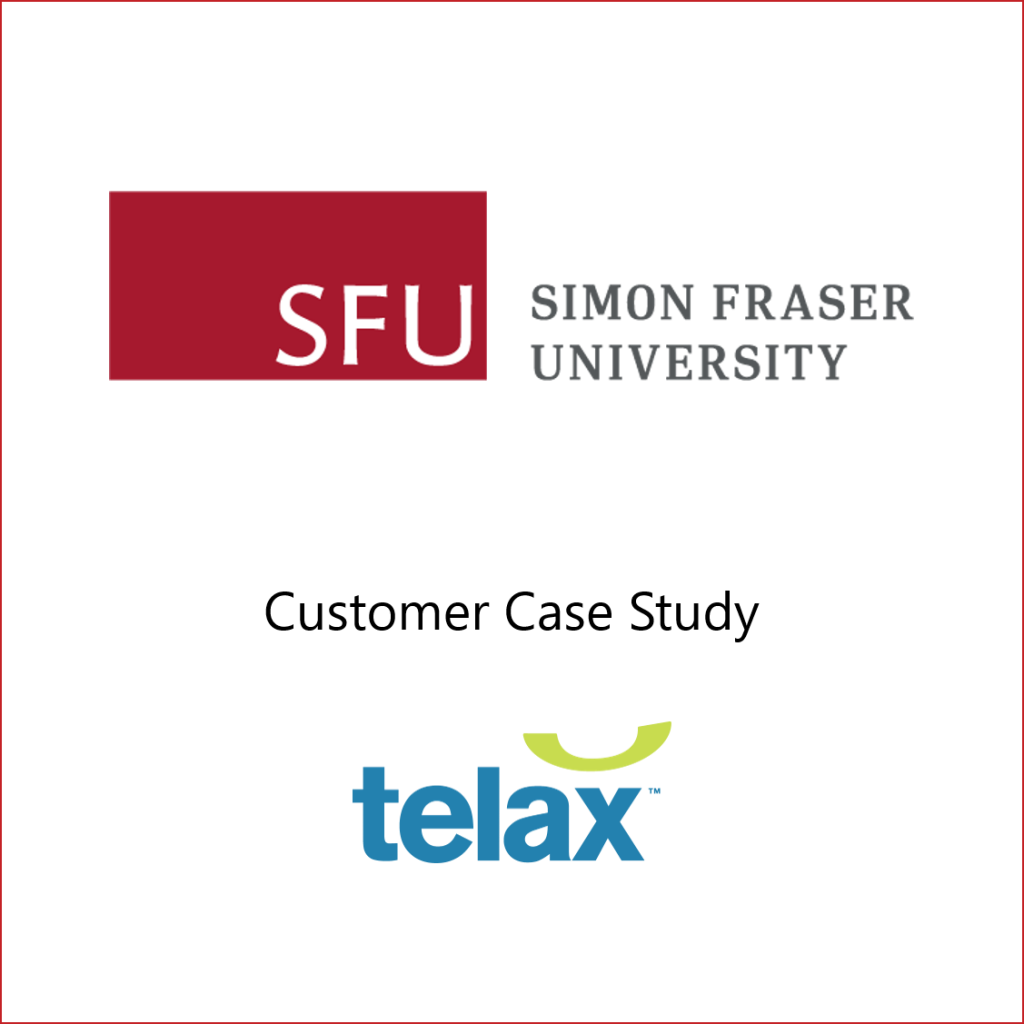Overview
Frequency Foundry Inc. implemented a Cloud contact solution for Simon Fraser University (SFU). The software of choice for performing SFU’s required functionalities was Telax. Frequency Foundry had partnered with Telax on previous call centre implementations and had seen proven success. Telax Cloud Contact Center Software as a Service (SaaS) model is designed to improve contact centre operations by reducing IT reliance, streamlining workflow processes, simplifying training, and providing insightful analytics.
SFU was founded in 1965 and has become Canada’s leading comprehensive university. It has three campuses in lower mainland British Columbia— Vancouver, Burnaby and Surrey. These campuses combined are a host to more than 30,000 students, 6,500 faculty and staff, and 130,000 alumni. SFU prides itself on being one of the world’s leading teaching and research universities.

The university was using the Legacy hardware system before seeking a new contact solution. The administration team was not happy with its communication tools at hand, and so decided to seek a change.
Key objectives for SFU using Telax:
- User-friendly contact centre system
- Easily adopted by admissions and registrar’s office
- Flexible and robust functionality
- Smooth transition with potential for campus-wide implementation
- Self-service through an administration portal
- Pricing consistency throughout billing periods
- Increase student experience across all departments
- Integration with existing CRM and student information system
- Potential to scale for future needs and higher volume
The Challenges
Like most universities, SFU’s admission’s office was receiving constant phone calls from students without pause. The contact centre receptionists were not able to see the number of calls in queue; there was no way to know when there would be a break, or how many students were waiting to be spoken with.
In addition to the high volume of phone calls, SFU was not able to prioritize the incoming calls. Simple questions regarding registration or changes of address were being dealt with by admissions instead of the registrar’s office, whose receptionists were fully qualified to be answering such questions. SFU had many call centre teams working throughout multiple locations, and each location had its own independent call system with its own phone number, which caused silos in the overall communication with students.
SFU students fill out a student satisfaction questionnaire twice a year; the university was getting negative feedback about the quality of support offered through the phone line. Students complained about the duration of wait time as their biggest concern.
The Solution
Student dissatisfaction was the driving force for seeking a solution to fix the long wait times and inefficiencies of SFU’s previous contact centre. The solution to the breakdown of communication with students was to implement a centralized call system. This would combat any confusion by the students and promote an efficient, consistent channel for communicating. Telax’s Cloud contact centre solution easily integrated with SFU’s SIS Peoplesoft, a software used in the Student Services Center.
Outcomes
- Saved close to $10,000 per IT employee—funds previously required to keep each IT personnel up-to-date on software
- Avoided purchasing the new handsets that an on-premise solution would require. By integrating Telax into the existing phone system, SFU saved an additional $10,000
- Determined call volume trends and gained insight into first call resolution statistics
- Pinpointed high-volume call periods and better plans for these spikes
- Gained visibility into the busiest departments
- Enhanced customer service and reduced agent stress and burnout
- Improved agent training by analyzing call recordings and call trigger insights
Conclusion
SFU was drawn to Telax because of its simplicity, cost-effectiveness and functionality, as well as its flat rate with everything included in the price and no hidden fees. By minimizing internal IT management, training, and fees for certification conferences, SFU will see substantial savings.
With this integration, students are able to enter their student ID, which automatically appears on the agent’s screen together with the student’s other information on record. Students only have to tell the operator their student number one time, whereas before they would have had to relay it multiple times. Student’s needs are also being met faster will less wait times and easier access to the right call agent for the inquiry.
SFU experienced several instances where call volume spiked. Prior to using the Telax, SFU was unable to foresee or prepare for these trends. Now, with robust metrics and reporting, SFU can quantify best cases and averages, and determine call volume trends and first call resolution statistics. The ability to measure performance is extremely helpful to SFU and achieving its goal of enhanced student experiences.
SFU has seen a smooth implementation with Telax and continues to work with Frequency Foundry in providing optimal call centre service and customer experience to its students.


